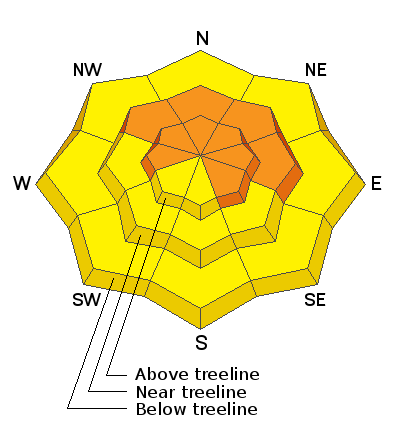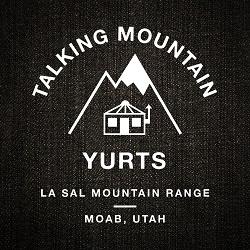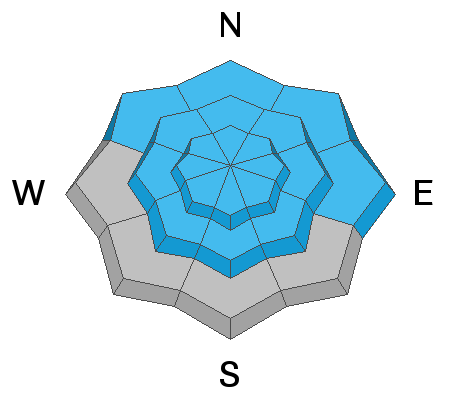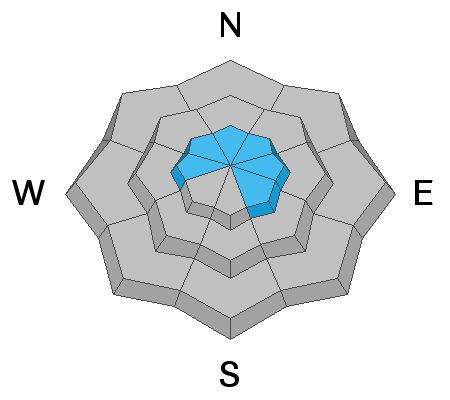The Geyser Pass Road was plowed on Tuesday, but 3"-5" of new snow has fallen since then. 4x4 with good tires is recommended.
The Lower Utah Nordic Alliance (LUNA) packed and rolled the lower meadow through Gold Basin on Thursday.
24 Hour Snow 0" 72 Hour Snow 10" Base Depth in Gold Basin 52" Wind SW 15-20 G35 Temp 21F
Overnight SW winds picked up ahead of the next trough of low-pressure diving across the Great Basin. Today look for increasing clouds and blustery southwest winds with a chance for snow developing this afternoon and into the evening. Points north and those areas favored by NW flow will see the best chance for snow. Winds will shift to the NW as the trough passes through and temps will plummet into the single digits. Sunday should be dry and clear with breezy NW winds. Conditions remain dry through Tues with a slight chance for snow brewing Tues night into Wed.
Snowpack Discussion
It was a beautiful day in the mountains yesterday with more than 2' of snow falling since last weekend. The powder party is over on S faces however as the strong sun and warm temperatures moistened the snow surface. Expect those aspects to be crusted over today. Seek low angle, sheltered, north-facing slopes for the best and safest conditions. Storms from last week added a significant load to our weak snowpack, and persistent weak layers of sugary faceted snow can now be found on most aspects. Wind-loaded, northerly-facing slopes remain the most likely areas to trigger deep, and dangerous avalanches, but you can also trigger avalanches on more southerly aspects. Avoidance of avalanche terrain or slopes steeper than about 30 degrees is the only sure strategy right now.
Conditions report from Thursday, Feb 18:
It's been a week since any natural avalanche activity has occurred. Natural activity from last weekend's storm was surprisingly low. With the current poor snowpack structure, this means many steep slopes are hanging in balance just waiting for a human trigger.







